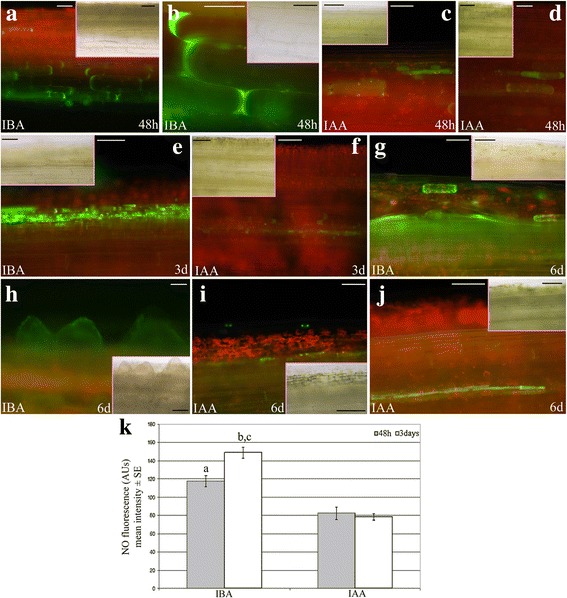Fig. 6.

Detection and quantification of the epifluorescence signal caused by NO in IBA- or IAA-cultured TCLs. a–d Presence of the epifluorescence signal (green colour) at 48 h in cells of the deepest layers of TCLs cultured with IBA (10 μM) (a-b), or IAA (10 μM) (c-d). e Numerous endodermis derivative cells showing the NO green signal in TCLs cultured with IBA for 3 days. f Rare cells with a faint signal in the deepest layers of the explant in the presence of IAA at day 3. g Detail of the numerous layers of the endodermis derivatives showing the green epifluorescence at day 6 (IBA treatment). h Presence of the green signal in the first formed ARPs (day 6, IBA treatment). i–j Very faint signal in scattered cells (i), and in thin-layered endodermis derivatives (j) of the explant at day 6 (IAA treatment). TCL longitudinal views. The same images under light microscopy are shown in the Insets. k Mean intensity (±SE) of NO fluorescence (AUs) in TCLs cultured with either IBA (10 μM) or IAA (10 μM) for 48 h and 3 days. a,b, P < 0.0001 difference with IAA within the same culture time. c, P < 0.001 difference with the other culture time within the same treatment. Columns with no letter are not significantly different. N = 200. Bars = 50 μm (b, c, e, g–j and Insets in b, f, g, i), 70 μm (a, d, f, and Insets in c, e, h, j), 100 μm (Insets in a and d)
